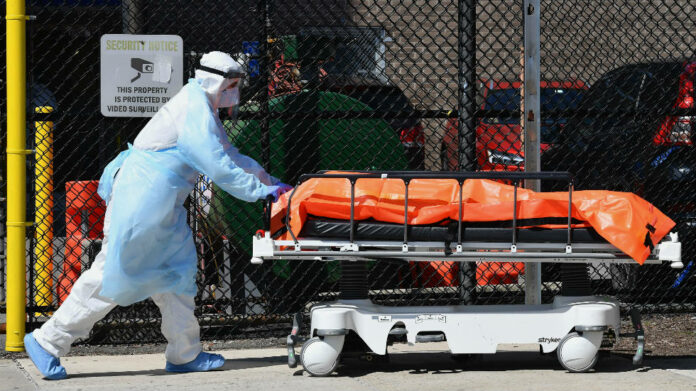A new study suggests the number of Americans who will die after contracting the novel coronavirus is likely to more than triple by the end of the year, even if current social distancing habits continue for months on end.
The study, conducted by the Comparative Health Outcomes, Policy and Economics Institute at the University of Washington’s School of Pharmacy, found that 1.3 percent of those who show symptoms of COVID-19 die, an infection fatality rate that is 13 times higher than a bad influenza season.
“COVID-19 infection is deadlier than flu — we can put that debate to rest,” said Anirban Basu, a health economist at the University of Washington who authored the study.
If the infection fatality rate is accurate, and if the coronavirus continues spreading at current rates even before most states open their economies and relax social distancing restrictions, COVID-19, the disease caused by the virus, could claim between 350,000 and 1.2 million American lives by the end of this year, Basu found.
“This is a staggering number, which can only be brought down with sound public health measures,” Basu said in a press release announcing the study, which appears in the journal Health Affairs.
The study tracks case counts and outcomes in 116 counties across 33 states to estimate the infection fatality rate, which varies widely across county and state lines in part because of gaps in testing capacity and the demographics of those who become infected.
Earlier estimates from the World Health Organization pegged the infection fatality rate as high as 3.4 percent, but almost certainly lower. Some estimates have suggested that the rate could be as low as half a percentage point — a rate that would still make the coronavirus far deadlier than any flu pandemic in the last century.
An infection fatality rate is distinct from a case fatality rate, which measures outcomes among those who have tested positive for the virus. The case fatality rate is much higher than the infection fatality rate in part because limited testing capacity means only those who were the sickest — and thus more likely to suffer the worst outcomes — were likely to be tested. Those with only mild symptoms or who had no symptoms might not have been tested, skewing case fatality rates because they do not capture those who were most likely to recover quickly and completely.
Other studies from the outbreak on the Diamond Princess cruise ship showed about 18 percent of those who contract the coronavirus never develop symptoms, suggesting the overall infection fatality rate should be about 20 percent lower than estimates, Basu wrote.
If the coronavirus spreads as widely as a typical flu, which infects about 10 percent of the U.S. population in a given year, the 1.3 percent infection fatality rate would mean almost half a million Americans would die of the coronavirus by year’s end.
As of Tuesday morning, more than 1.5 million people in the United States have contracted the coronavirus, and 90,000 have died, according to data maintained by Johns Hopkins University of Medicine. Both of those figures likely undercount the true spread and toll the virus has taken, Basu said.
But the study’s author pointed to another key difference between the coronavirus and a seasonal influenza: The coronavirus is more infectious than a typical flu, meaning more Americans are likely to contract the virus than would otherwise come down with the flu.
Even as states begin reopening, many are experiencing a rapid increase in the number of new cases. States like Alabama, Arkansas, Maine, Minnesota, North Carolina and North Dakota have seen their numbers of cases spike by more than 25 percent over the last two weeks, according to data collected by a group of researchers in a collaboration called the Covid Exit Strategy.
States that have seen big decreases in their number of cases, like New York, New Jersey and Massachusetts, are still reporting more than 1,000 new confirmed cases on a daily basis.
The United States is confirming about 20,000 new coronavirus cases a day, according to data maintained by The Covid Tracking Project. That figure is down from earlier this month, when about 25,000 new cases were showing up on a daily basis, a positive step but one that still shows community transmission is widespread.
Experts like Michael Osterholm, director of the Center for Infectious Disease Research and Prevention, have estimated that 60 to 70 percent of all Americans will eventually be infected by the coronavirus.
By comparison, Basu’s estimate is based on what he called a conservative estimate that would have 20 percent of Americans becoming infected by the end of the year.
Basu said more data would lead to a finer measurement of the infection fatality rate over a longer term, one that will inform future models estimating the virus’s toll. His measure, he said, is not meant to be a final conclusion.
“The infection fatality ratio estimate is itself dynamic in nature,” he said. “The overall estimate can both increase or decrease in the future, depending on the demographics where the infections will be spreading. It is possible, as the infection spreads to more rural counties of the country, the overall infection fatality rate will increase due to the lack of access to necessary health care delivery.”






